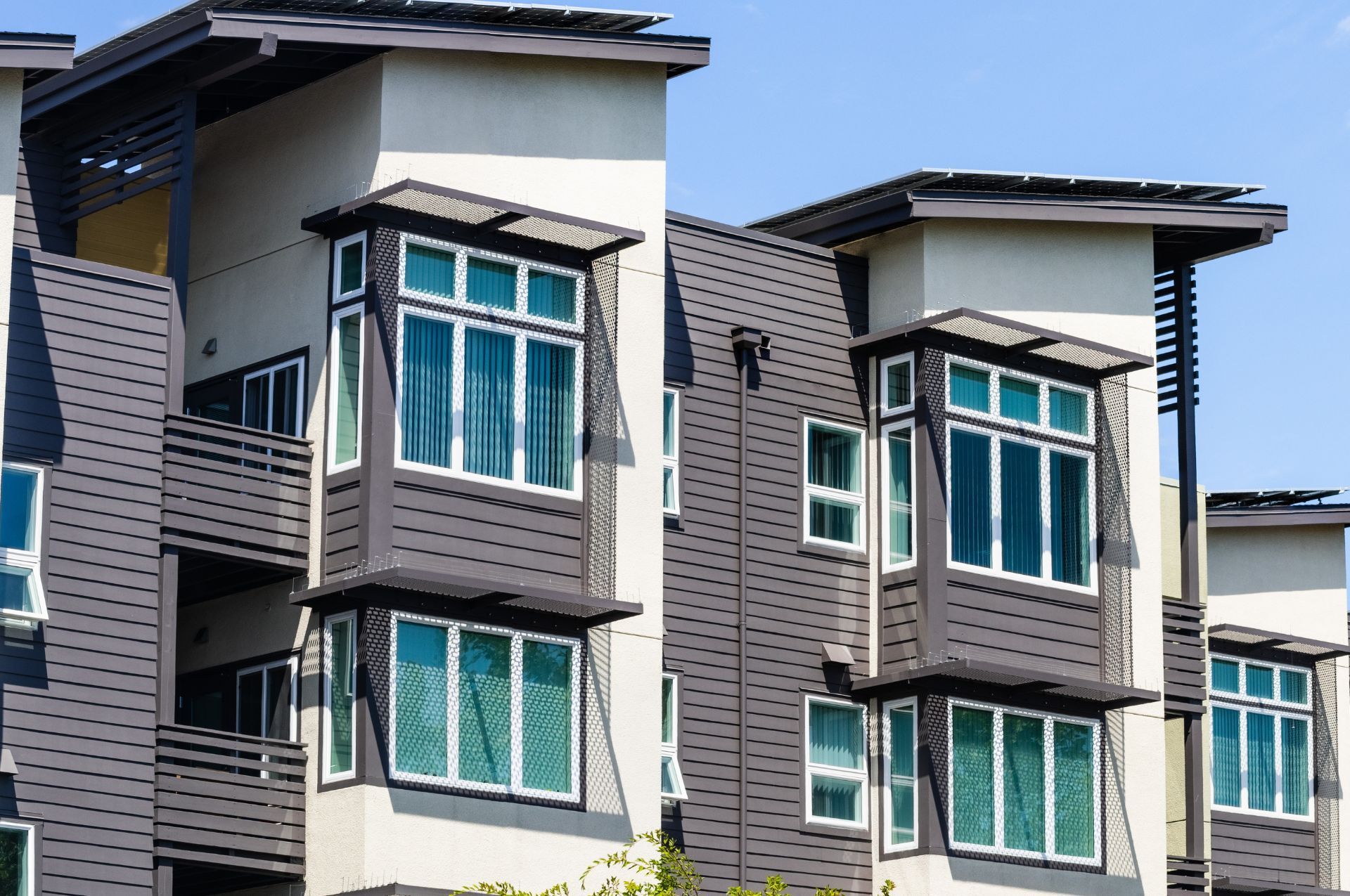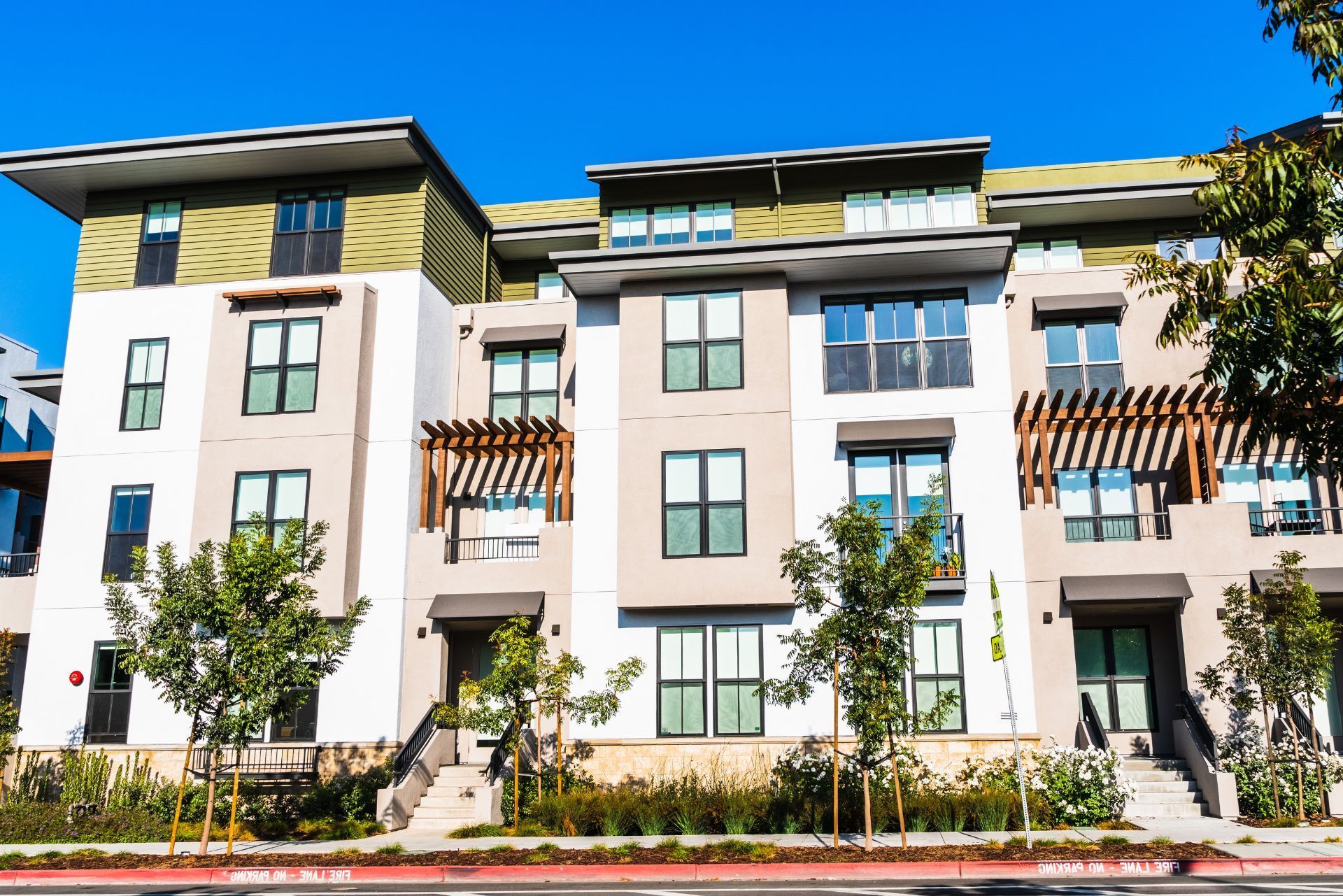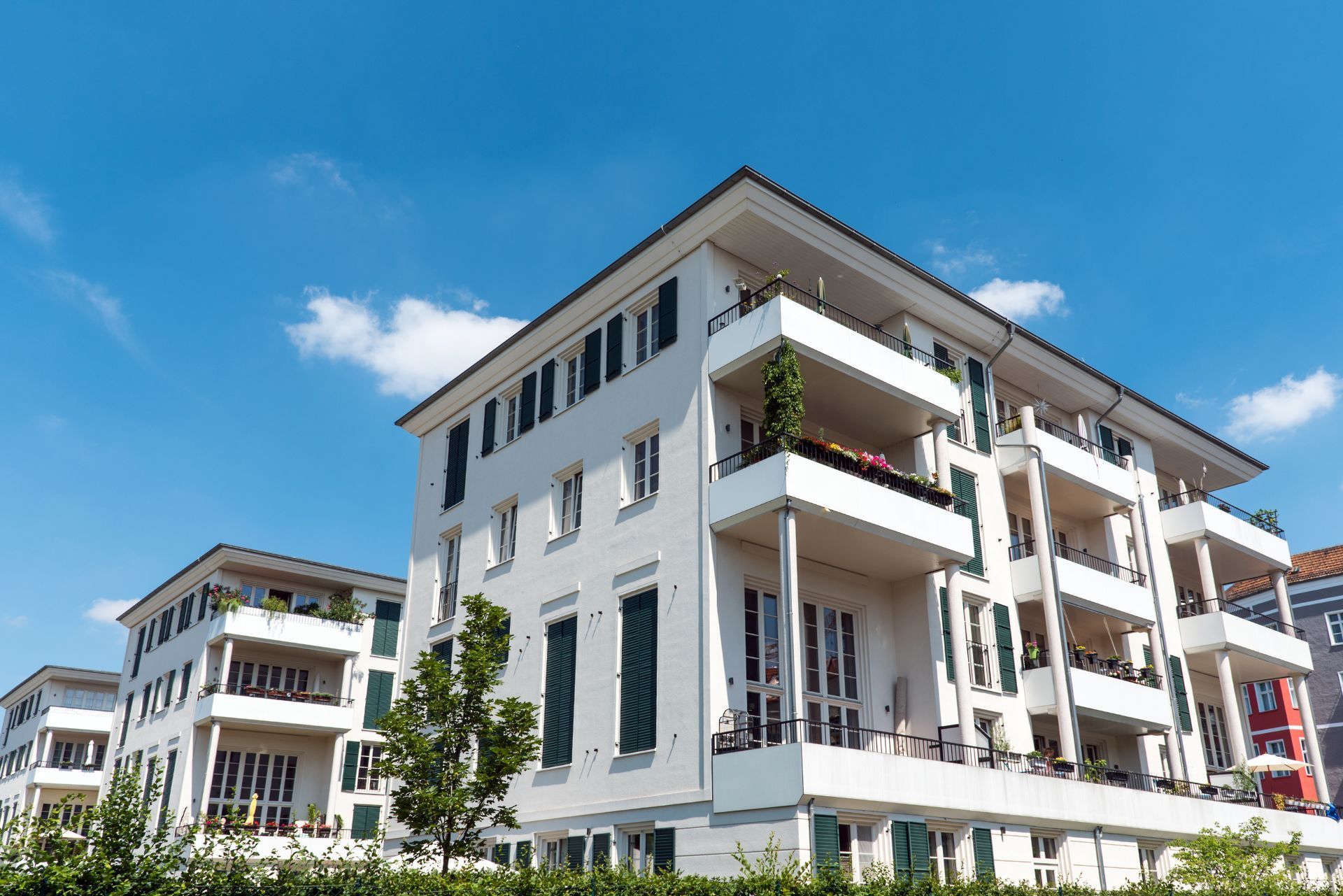
Top 3 Recommended Policies
Investing in multifamily properties can be a lucrative venture, especially in a state like Connecticut, where the real estate market offers diverse opportunities. However, with the potential for profit comes the necessity of protecting your investment. Multifamily building insurance is essential for safeguarding your assets against various risks. This article will delve into everything you need to know about Connecticut multifamily building insurance, covering its importance, types of coverage, factors influencing premiums, and more.
Understanding Multifamily Building Insurance
Multifamily building insurance is a specialized form of property insurance designed to protect buildings that house multiple families, such as apartment complexes, duplexes, and triplexes. This insurance not only covers the physical structure but also provides liability protection and additional coverage options tailored to the unique needs of multifamily properties.
What Does Multifamily Building Insurance Cover?
The coverage provided by multifamily building insurance can be extensive. Typically, it includes:
Property Damage: This covers damage to the building caused by fire, vandalism, theft, and natural disasters.
Liability Protection: If a tenant or visitor is injured on the property, this coverage helps protect the owner from lawsuits.
Loss of Rental Income: If the property becomes uninhabitable due to a covered event, this coverage compensates for lost rental income.
Additionally, many policies offer optional coverages that can be tailored to specific needs, such as equipment breakdown, flood insurance, or earthquake coverage. Understanding the nuances of each coverage type is crucial for making informed decisions. For instance, while standard policies may cover general wear and tear, they might not include specific incidents like mold damage or pest infestations, which can be critical in maintaining the property’s value and tenant satisfaction.
The Importance of Multifamily Building Insurance
Having multifamily building insurance is not just a good idea; it is often a requirement. Lenders typically require insurance before approving mortgages for multifamily properties. Beyond fulfilling legal obligations, insurance serves as a safety net, protecting property owners from significant financial losses.
Moreover, the multifamily housing market can be unpredictable. Natural disasters, economic downturns, and unforeseen events can occur at any time. Insurance provides peace of mind, allowing property owners to focus on managing their investments rather than worrying about potential risks. Additionally, the presence of comprehensive insurance can enhance a property owner's credibility in the eyes of potential tenants, who may feel more secure knowing that the property is well-protected. This can lead to higher occupancy rates and a more stable rental income, as tenants are often more inclined to choose properties that demonstrate a commitment to safety and risk management.
Furthermore, understanding the specific needs of your multifamily property can lead to more effective risk management strategies. For example, properties located in flood-prone areas may benefit significantly from tailored flood insurance, while those in regions with high earthquake activity should consider earthquake coverage as a necessity rather than an option. Engaging with an insurance professional who specializes in multifamily properties can help identify these needs and ensure that the coverage is both adequate and cost-effective, ultimately safeguarding the investment and enhancing the overall value of the property.

Types of Multifamily Building Insurance Policies
When it comes to multifamily building insurance, there are several types of policies available. Each serves different needs and circumstances, making it essential to choose the right one for your property.
1. Property Insurance
This is the most fundamental type of insurance for multifamily buildings. Property insurance covers the physical structure of the building and any personal property owned by the landlord. It protects against risks such as fire, wind, and vandalism. Additionally, property insurance may also cover loss of rental income if the building becomes uninhabitable due to a covered event. This feature can be particularly beneficial for landlords, as it helps to mitigate financial losses during repair periods, ensuring that cash flow remains stable.
2. General Liability Insurance
General liability insurance is crucial for protecting property owners from claims made by tenants or visitors. This coverage addresses bodily injury, property damage, and personal injury claims. For instance, if a tenant slips and falls in a common area, this insurance would cover legal fees and any settlements. Moreover, it can also cover incidents related to advertising injuries, such as defamation or copyright infringement, which can arise from promotional materials. Given the potential for high legal costs, having adequate general liability insurance is not just a safeguard; it's a necessary investment in the security of your multifamily property.
3. Umbrella Insurance
Umbrella insurance provides additional liability coverage beyond the limits of standard policies. This is particularly important for multifamily properties, where the risk of lawsuits can be higher. An umbrella policy can help protect against large claims that exceed standard liability limits. It acts as a safety net, offering peace of mind to property owners who may face unexpected legal challenges. Furthermore, umbrella insurance can also cover certain claims that may not be included in primary policies, such as those related to false arrest or invasion of privacy, making it a comprehensive option for multifamily property owners looking to enhance their overall risk management strategy.
Factors Influencing Insurance Premiums
Several factors can affect the cost of multifamily building insurance premiums in Connecticut. Understanding these factors can help property owners make better decisions when shopping for insurance.
1. Location
The location of the property plays a significant role in determining insurance costs. Areas prone to natural disasters, such as floods or hurricanes, may have higher premiums. Additionally, urban areas with higher crime rates may also see increased costs due to the higher risk of vandalism or theft. Furthermore, proximity to fire departments and emergency services can also influence premiums; properties located closer to these services often benefit from lower rates due to the reduced response time in emergencies, which can mitigate potential damages.
2. Property Age and Condition
The age and condition of the building can also impact premiums. Older buildings may require more maintenance and repairs, leading to higher insurance costs. Conversely, newer buildings constructed with modern materials and safety features may qualify for discounts. It’s also worth noting that the building's maintenance history can play a role; properties that have a consistent record of upkeep and improvements may be viewed more favorably by insurers, potentially resulting in lower premiums. Additionally, features such as updated electrical systems, plumbing, and roofing can further enhance the building's insurability and reduce risks associated with older structures.
3. Coverage Amount and Deductibles
The amount of coverage chosen and the deductible will directly influence the premium. Higher coverage limits typically result in higher premiums, while opting for a higher deductible can lower costs. It’s essential to strike a balance between adequate coverage and affordability. Property owners should also consider the specific risks associated with their multifamily units, such as liability coverage for tenant injuries or damage to personal property. Tailoring the policy to include endorsements or additional coverage options can provide peace of mind, albeit at an increased cost, but may be worth the investment for comprehensive protection against unforeseen events.
How to Choose the Right Insurance Provider
Choosing the right insurance provider is crucial for ensuring that your multifamily property is adequately protected. Here are some steps to consider when selecting an insurance company:
1. Research and Compare
Start by researching different insurance providers that specialize in multifamily building insurance. Look for companies with strong reputations, positive customer reviews, and a history of excellent service. Comparing quotes from multiple providers can help identify the best coverage options and pricing. Additionally, consider checking their financial stability through ratings from agencies like A.M. Best or Standard & Poor’s. A financially sound company is more likely to fulfill its obligations in the event of a claim, providing you with peace of mind.
2. Evaluate Coverage Options
Not all insurance policies are created equal. Carefully evaluate the coverage options offered by each provider. Ensure that the policy includes essential coverages such as liability protection, loss of rental income, and any additional options relevant to your property. It's also wise to inquire about endorsements or riders that can expand your coverage, such as protection against natural disasters or vandalism. Understanding the exclusions in a policy is equally important, as it can help you avoid unpleasant surprises when you need to file a claim.
3. Seek Professional Advice
Consulting with an insurance broker or agent who specializes in multifamily properties can provide valuable insights. They can help navigate the complexities of insurance policies, ensuring that you select the best coverage for your specific needs. A knowledgeable broker will also be able to explain the nuances of different policies and assist you in understanding how various factors, such as location and property condition, can impact your premiums. Furthermore, they can advocate on your behalf during the claims process, ensuring that you receive the compensation you deserve in a timely manner.
In addition to these steps, it’s essential to assess the customer service quality of potential insurance providers. Reach out to their customer service teams with questions or concerns to gauge their responsiveness and willingness to assist. A provider that prioritizes customer service can make a significant difference when you need support during a claim. Moreover, consider looking for providers that offer online account management tools, which can simplify policy management and make it easier to access important documents and information at any time.

Common Exclusions in Multifamily Building Insurance
While multifamily building insurance provides extensive coverage, it is essential to be aware of common exclusions that may apply. Understanding these exclusions can help property owners avoid surprises when filing a claim.
1. Flood Damage
Many standard multifamily building insurance policies do not cover flood damage. Property owners in flood-prone areas should consider purchasing separate flood insurance to ensure adequate protection. Flood insurance can help cover the costs of repairs and replacements due to water damage from rising water levels, which is often not included in standard policies. Additionally, it's important to note that flood insurance typically has a waiting period before it becomes effective, so property owners should plan accordingly and secure coverage well in advance of any potential flooding events.
2. Earthquake Damage
Similar to flood coverage, earthquake damage is often excluded from standard policies. Property owners in regions susceptible to earthquakes should investigate earthquake insurance options to safeguard their investments. This type of insurance can provide financial protection for structural damage, personal property loss, and even additional living expenses if the building becomes uninhabitable due to an earthquake. Furthermore, as seismic activity can vary greatly depending on location, it is advisable for property owners to consult with local experts to understand the specific risks and coverage options available in their area.
3. Wear and Tear
Insurance policies typically do not cover damage resulting from normal wear and tear. Property owners are responsible for maintaining their buildings and addressing any maintenance issues before they escalate into larger problems. This includes regular inspections and timely repairs of roofs, plumbing, and electrical systems to prevent deterioration. Additionally, many insurance providers may require documentation of maintenance efforts to validate claims, emphasizing the importance of keeping detailed records of all maintenance and repairs conducted on the property.
4. Negligence
Another common exclusion is damage resulting from negligence or failure to adhere to safety codes and regulations. If a property owner neglects necessary repairs or does not comply with local building codes, any resulting damages may not be covered under their insurance policy. This highlights the importance of staying informed about local regulations and ensuring that the property is well-maintained and compliant. Regular safety audits and proactive measures can help mitigate risks and demonstrate due diligence in the eyes of the insurer.
5. Intentional Damage
Insurance policies also typically exclude coverage for any damage that is intentionally caused by the property owner or their tenants. This can include vandalism, arson, or any other form of deliberate destruction. Property owners should take steps to foster a positive living environment and address any tenant disputes promptly to minimize the risk of intentional damage. Additionally, implementing security measures such as surveillance cameras and adequate lighting can help deter potential vandalism and protect the property from intentional harm.
Claims Process for Multifamily Building Insurance
Understanding the claims process is crucial for property owners to ensure a smooth experience when filing a claim. Here’s a step-by-step guide to navigating the claims process:
1. Report the Incident
As soon as an incident occurs, such as damage to the property or an injury on the premises, it is essential to report it to the insurance provider promptly. Most policies require timely reporting to process claims effectively.
2. Document the Damage
Thorough documentation is vital when filing a claim. Take photographs of the damage, collect witness statements if applicable, and keep records of any communications related to the incident. This documentation will support the claim and help expedite the process.
3. Work with an Adjuster
After filing a claim, the insurance company will assign an adjuster to assess the damage. The adjuster will evaluate the situation, review the documentation, and determine the amount of compensation owed. It’s essential to cooperate with the adjuster and provide any additional information they may require.
Cost-Saving Tips for Multifamily Building Insurance
1. Bundle Policies
Many insurance providers offer discounts for bundling multiple policies, such as property and liability insurance. Consider consolidating your insurance needs with one provider to take advantage of potential savings.
2. Implement Safety Measures
Investing in safety measures can lead to lower premiums. Installing security systems, smoke detectors, and fire alarms can reduce the risk of claims and may qualify property owners for discounts.
3. Regularly Review Coverage
As the property evolves, so do its insurance needs. Regularly reviewing coverage and updating policies as necessary can ensure that property owners are not overpaying for unnecessary coverage or missing out on potential discounts.
Conclusion
Connecticut multifamily building insurance is a vital component of protecting real estate investments. Understanding the various types of coverage, factors influencing premiums, and the claims process can empower property owners to make informed decisions. By choosing the right insurance provider and implementing cost-saving strategies, multifamily property owners can safeguard their investments while optimizing their insurance expenses.
Investing in multifamily properties can be rewarding, but it comes with its share of risks. Adequate insurance coverage is essential for mitigating those risks and ensuring peace of mind. With the right knowledge and preparation, property owners can navigate the complexities of multifamily building insurance effectively.
Contact Us
Phone
Locations
Connecticut Location
703 Hebron Ave., 3rd Floor, Glastonbury, CT 06033
North Carolina Location
436 East 36th St., Charlotte, NC 28205


